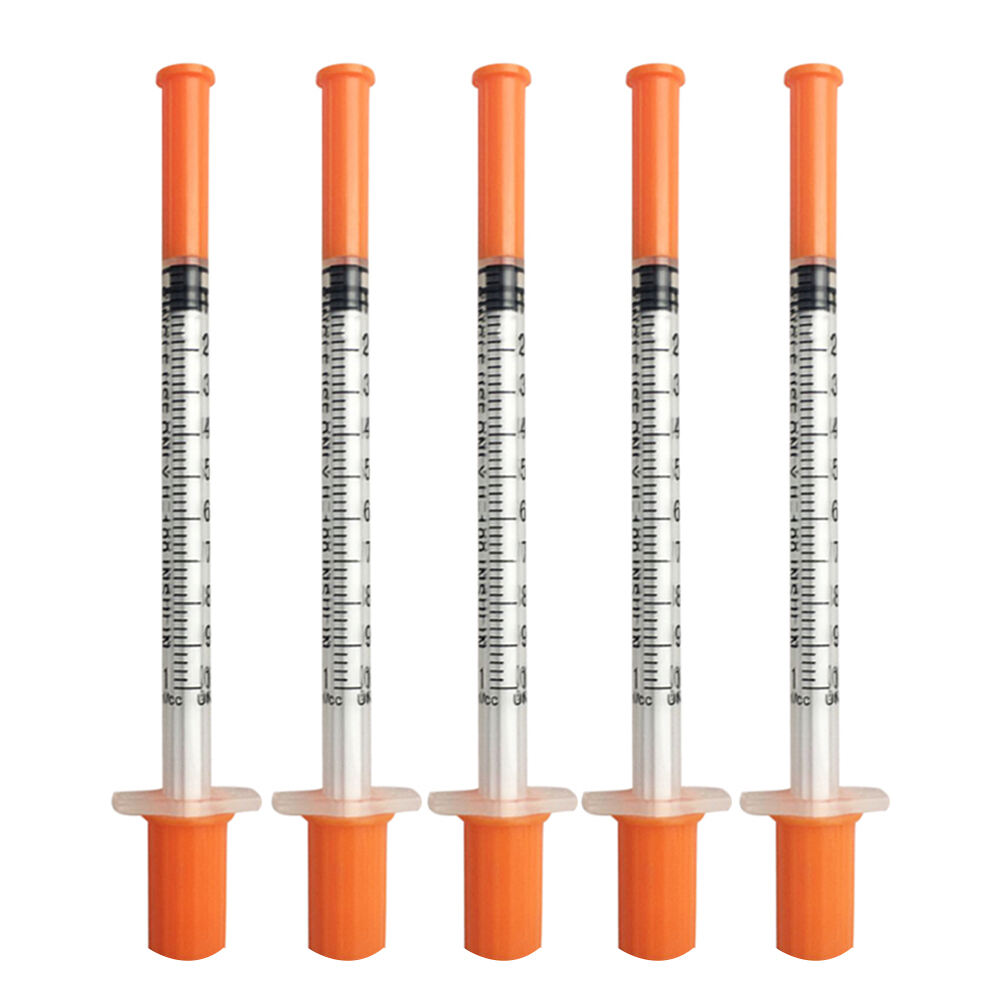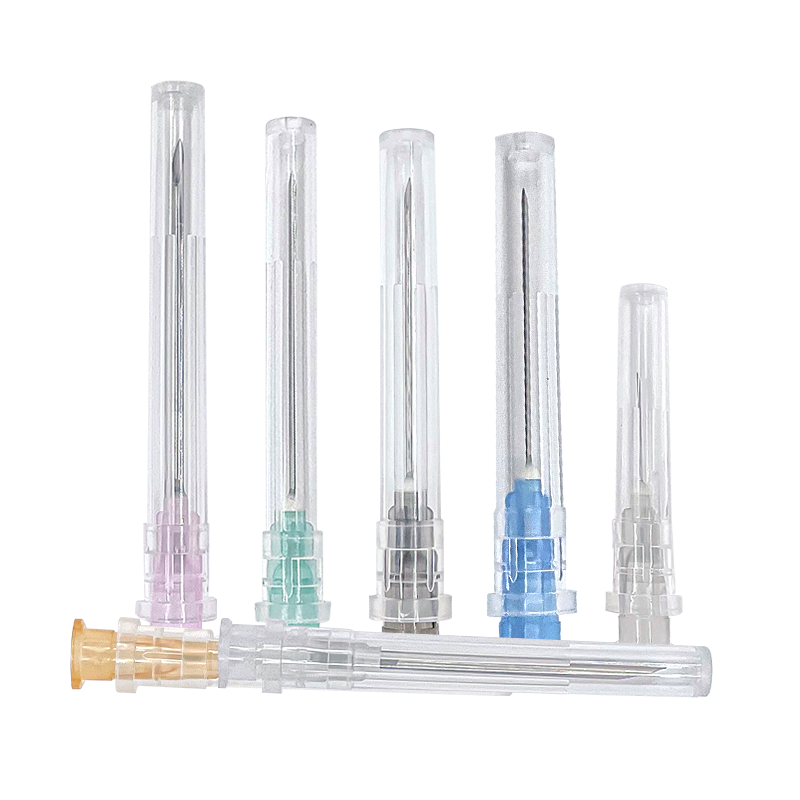Understanding Modern Insulin Administration Methods
Managing diabetes effectively requires proper insulin administration, and using an insulin syringe remains one of the most common and reliable methods. Whether you're new to insulin therapy or looking to refine your technique, mastering the correct use of an insulin syringe is crucial for maintaining optimal blood glucose levels and overall health.
Insulin syringes have evolved significantly over the years, becoming more precise and user-friendly. Today's insulin syringes feature clear markings, smooth plungers, and ultra-fine needles that make injection more comfortable than ever before. Understanding how to properly use these medical devices ensures you get the right dose every time while minimizing discomfort and risks.
Essential Components of Insulin Syringes
Anatomy of an Insulin Syringe
An insulin syringe consists of several key components that work together to deliver precise insulin doses. The barrel is marked with clear measurements in units, allowing for accurate dosing. The plunger moves smoothly within the barrel, creating the suction needed to draw insulin and deliver it during injection. The needle, typically ultra-fine and short, is designed specifically for subcutaneous injection.
Modern insulin syringes come in different sizes, commonly 30-unit, 50-unit, and 100-unit capacities. The needle gauges typically range from 28 to 31, with higher numbers indicating finer needles. These variations allow healthcare providers to recommend the most appropriate insulin syringe based on individual insulin requirements and personal preferences.
Different Types and Sizes Available
Selecting the right insulin syringe size is crucial for accurate dosing. The 30-unit syringes are ideal for those requiring smaller doses, as they provide better precision for measuring small amounts. The 50-unit syringes offer a middle ground, while 100-unit syringes are suitable for those requiring larger doses.
Needle length also varies, with options typically ranging from 6mm to 12.7mm. The choice of needle length depends on factors such as body type, injection site, and personal comfort. Your healthcare provider can help determine the most appropriate needle length for your needs.

Proper Storage and Preparation
Storage Guidelines for Insulin and Syringes
Proper storage of both insulin and insulin syringes is essential for maintaining their effectiveness and safety. Unopened insulin should be refrigerated at temperatures between 36°F and 46°F (2°C to 8°C). Once opened, insulin can typically be stored at room temperature for up to 28 days, but always check the manufacturer's guidelines.
Insulin syringes should be stored in a clean, dry place at room temperature. Never store syringes in the bathroom or other humid environments, as moisture can compromise sterility. Keep syringes in their original packaging until ready for use, and always check the expiration date before use.
Pre-injection Preparation Steps
Before using an insulin syringe, gather all necessary supplies: insulin vial, alcohol swabs, and a new sterile syringe. Wash your hands thoroughly with soap and water to maintain proper hygiene. Check the insulin for any changes in appearance, such as clumping, floating particles, or unusual coloring.
If using cloudy insulin, gently roll the vial between your palms to mix it - never shake the vial as this can create air bubbles and affect dosing accuracy. Clean the rubber stopper of the insulin vial with an alcohol swab and allow it to dry completely before inserting the needle.
Step-by-Step Injection Technique
Drawing the Correct Insulin Dose
Begin by pulling the plunger to draw air into the insulin syringe equal to your prescribed dose. Insert the needle into the insulin vial and push the air in, which helps prevent vacuum formation in the vial. With the vial upside down, slowly draw out your prescribed dose of insulin, ensuring there are no air bubbles in the syringe.
If you notice air bubbles, gently tap the insulin syringe to make them rise to the top, then slowly push them back into the vial. Recheck your dose to ensure accuracy, as air bubbles can affect the amount of insulin delivered.
Choosing and Rotating Injection Sites
Proper injection site rotation is crucial for preventing lipohypertrophy (fatty lumps under the skin) and ensuring consistent insulin absorption. Common injection sites include the abdomen, thighs, upper arms, and buttocks. The abdomen often provides the most consistent absorption rate and is easily accessible.
Create a systematic rotation pattern for your injection sites, moving at least one inch away from your previous injection. Avoid injecting into areas with scars, bruises, or inflammation. Some people find it helpful to create a written log or use a rotation chart to track their injection sites.
Safety and Disposal Considerations
Preventing Contamination and Infection
Maintaining sterility throughout the injection process is paramount. Never reuse insulin syringes, as this can lead to infection and affect insulin delivery accuracy. Always check that the protective cap is intact before use, and never touch the needle or allow it to contact any surface before injection.
Clean the injection site with an alcohol swab and allow it to dry completely before administering insulin. Using a new sterile insulin syringe for each injection helps prevent bacterial contamination and reduces the risk of infection.
Proper Disposal Methods
Used insulin syringes must be disposed of safely to prevent injury and contamination. Use an FDA-cleared sharps disposal container, which can be purchased at pharmacies or obtained through medical supply companies. Never throw loose syringes in the regular trash or recycling.
When the sharps container is about three-quarters full, seal it properly and dispose of it according to local regulations. Many communities have specific guidelines for medical waste disposal, and some pharmacies offer take-back programs for used sharps containers.
Frequently Asked Questions
Can I reuse my insulin syringe to save money?
Healthcare professionals strongly advise against reusing insulin syringes. While it might seem cost-effective, reuse can lead to bacterial contamination, increased risk of infection, and needle dulling, which makes injections more painful. Additionally, the precision of insulin delivery may be compromised with repeated use.
How do I know if I'm injecting insulin correctly?
Proper insulin injection technique includes choosing the right injection site, inserting the needle at a 90-degree angle, and holding the needle in place for 5-10 seconds after injection. If you experience unusual pain, bleeding, or bruising, or if your blood glucose levels are inconsistent, consult your healthcare provider to review your technique.
What should I do if I see air bubbles in my insulin syringe?
Air bubbles in an insulin syringe can affect dosing accuracy and should be removed. To eliminate them, hold the syringe with the needle pointing upward, tap the barrel gently to make the bubbles rise to the top, then carefully push the plunger to expel the air. Always recheck your dose after removing air bubbles.
How long should insulin be kept at room temperature?
Once opened, most insulin types can be kept at room temperature (59°F to 86°F) for up to 28 days. However, this can vary by manufacturer and insulin type. Always check the product information and consult your healthcare provider for specific storage guidelines. Unopened insulin should remain refrigerated until needed.

